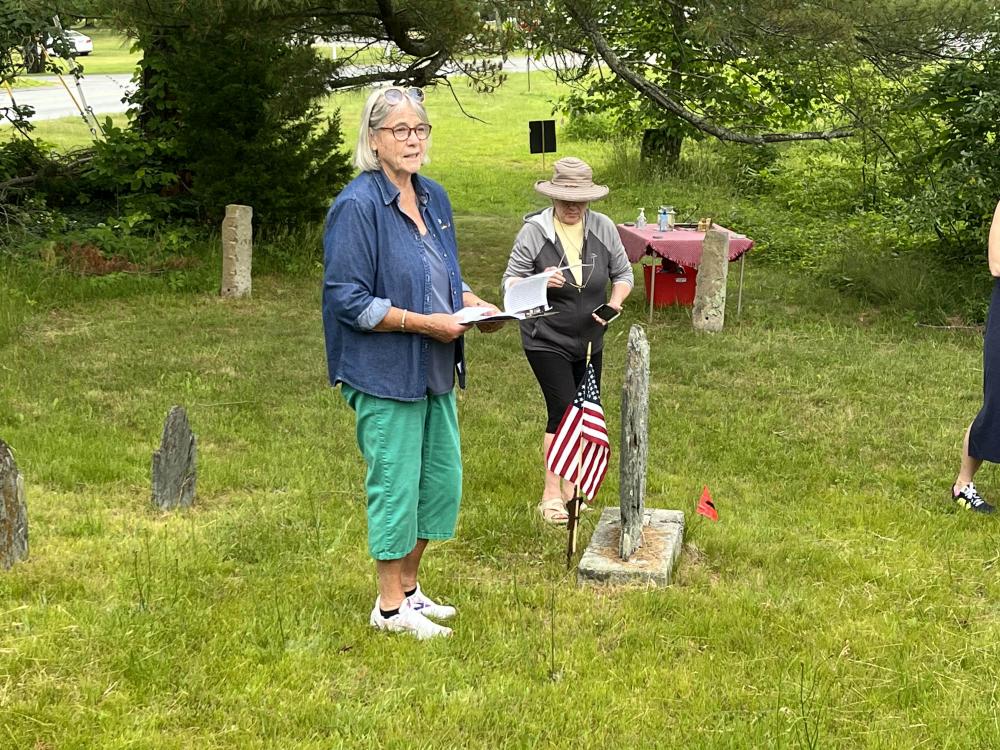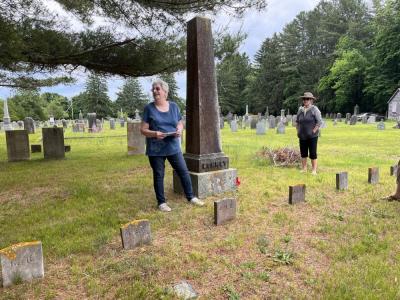Rochester Historical Society shares tales of Rochester’s beginnings
ROCHESTER – The headstones at Rochester's Center Cemetery might contain few words, but there are many stories to tell about the people buried there.
A tour of the cemetery was hosted by Sue La Fleur and Connie Eshbach of the Rochester Historical Society on Sunday, June 12.
While years ago La Fleur and Eschbach had included the cemetery in a tour of Rochester, they had so much to say about other parts of town that they never reached the cemetery.
So, they decided to give the historical gem its own spotlight.
“The Rochester Historical Society is always looking for ways to share the town's history,” said Eschbach.
It was an overcast day to walk the grounds as the guides launched into their explanation of the history of the cemetery.
It was built in 1700, 14 years after Rochester was founded. Instrumental in the formation of the cemetery were Mark Haskell, the town’s first town clerk, Peter Blackmer, the town’s second town clerk, and Samuel Prince, a wealthy landowner.
Blackmer died before the cemetery was complete, and it is said he was the first person buried there, though there is no headstone to be found.
The oldest headstone recorded is Mary Chapman, who died in 1718.
La Fleur and Eschbach introduced the tour group to a number of interesting characters in Rochester’s history.
For example, Eschbach told the life story of Reverend Jonathan Moore, the second pastor of the Rochester Congregational Church, who was so strict that he often kicked people out of the church that he deemed “unworthy”, despite perhaps not being so pious himself, as he was accused of beating his wife.
Moore was later dismissed from the church, though he continued preaching from his own home.
“He was a very smart man,” said Eschbach, “he just wasn’t very nice.”
The cemetery also contains the grave of Colonel Charles Sturdivant, who was the last person to die in an epidemic of spotted fever in 1816, which killed mostly adult males, ending the lives of 61 heads of families in the area.
Eschbach and La Fleur stated that the cemetery gives “insight into what the people of Rochester were like.”
La Fleur noted that the cemetery contains graves of Indians and Black people long before it was common practice for different races to share cemeteries.
“I think it speaks well of the people of Rochester at the time,” she said.
Those walking around the cemetery will notice depictions of willow trees, urns, and skulls etched onto different gravestones. Jeff Stevens will present on what these different symbols mean at the next Rochester Historical Society meeting at 355 County Road on June 15,2022 at 7:00 p.m.
This will be followed by Cathy Phinney, who will explain how to safely clean old, discolored tombstones.
The historical society also hopes to plan more cemetery tours in the future.












